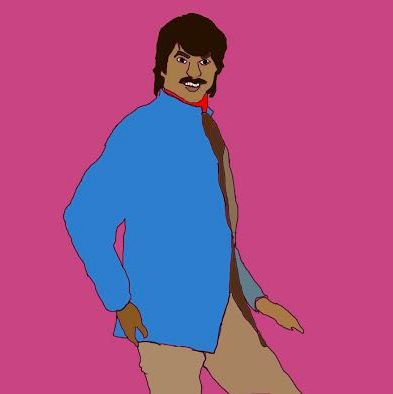
Part of the fun of Master of None is feeling how I imagine those townspeople felt when the kid shouted about the emperor’s clothing situation. Absurdities we all agreed to accept are falling down, and it’s cool and weird to stand in the dust.
Most brown people in Hollywood — men in particular — cannot escape the accent. This is true no matter where you’re born. A few years ago, the Pakistani-American actor Kumail Nanjiani told me he’d experienced, more than once, a casting agent asking him to drop his actual accent to do an “Apu accent.” Nanjiani is a very funny actor, who since landed on Silicon Valley. To get where he was, he needed to accept his lord and savior, Apu.
If the thought of a Pakistani man channeling a cartoon Indian for the benefit of white people doesn’t prove our love for a humiliating accent, the montage of them that kicks off episode four of Master of None should. When people are reduced to a few set traits, they aren’t believable as human beings. It’s even worse when the key trait is a made-up accent Ashton Kutcher can take a fair stab at, too.
If anything can change minds, I think it’s comedy. Getting people to laugh seduces them into caring. After all, laughing is what made us fall in love with the accent in the first place. Now it works against that precedent, counteracting one of those Hollywood rules echoed by the producer in this week’s episode, Jerry Danvers: “There can’t be two.”
Until his actual last breath, the fictional Hollywoodian insists that his comedy, Three Buddies, can’t bear more than one Indian. Audiences would revolt! All the while, throughout the episode, we’re laughing at a sort of Twilight Zone version of Three Buddies, starring three Indians: two perfectly charming Indian men rule the episode — Ansari and Ravi Patel as his puppy-dog actor friend. (The show itself rides on two Asian men, onscreen and off.) Occasionally, a beefcake named Anush wanders in to close the last piece of a puzzle Danvers believes is unsolvable.
Danvers is not a figment of anyone’s imagination. This show exists because a brown man needed Netflix to land a three-dimensional role. The accent paved pathways in the brains of schoolyard bullies and future studio heads who see men who can sport it primarily as objects of comedy, asexual, weak, never heroes. It was designed by experts in the field of getting people to laugh. As Hank Azaria himself told me in an interview about Apu three years ago, he came up with the iconic voice before knowing any Indians personally. He based his impression largely on Peter Sellers’s character in The Party, a role that stung India’s only global entertainer, Satyajit Ray, when the British actor debuted it in the 1960s. Offended, the famed Bengali filmmaker nixed a project with Sellers, surely a potential career high.
Then as now, misrepresentation wasn’t a sexy cause. No one dies from it. As MON actor Ravi Patel pointed out this week on Vulture, embracing the funny accent can mean making a living for a struggling actor. But if the people who are themselves mined for jokes turn against it when they finally catch some power, we might question the goodness of the joke in the first place. Forced onto those on their way up, they make it hard for the rest of us to see full humans, opening the door to rules on how many of a kind we can handle at once. Turns out there can be two. Or three. There are more than a billion, after all.

